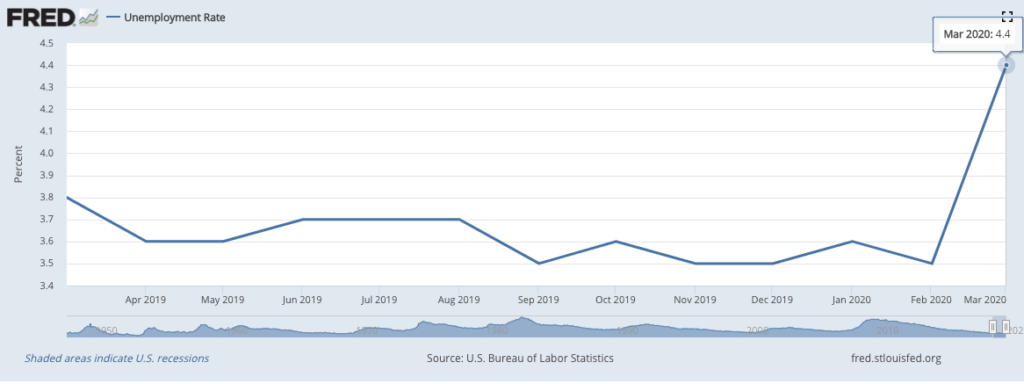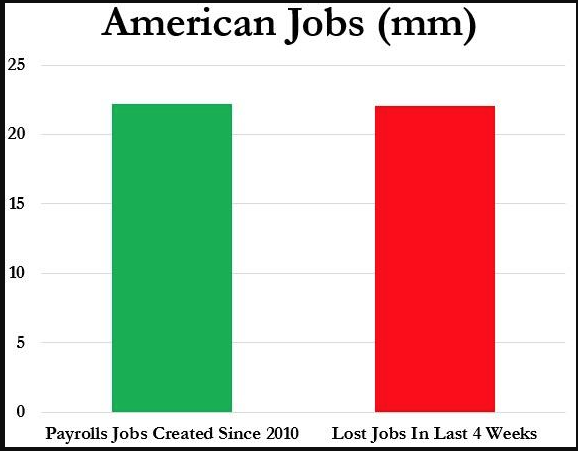The above chart depicts that the wealthiest and upper middle class have not only regained their wealth previous to the 2008 recession, but gained greater wealth, at the expense of the middle class and poorest classes. And, now, middle class and poorer families are facing an even greater economic downturn that has yet to be even defined in scope, though if the unemployment rate is a guide, it looks to be greater than The Great Financial Crisis of 2008 and on par with The Great Depression of the 1930’s.

As displayed in the third chart below, the economic upheaval spurred by the response to COVID-19 washed out the same number of jobs created in the “recovery” since The Great Financial Crisis of 2008, indicating underlying structural issues and a backsliding of the economy again. Thus, the already reduced middle wealth is in jeopardy of further decline, in relation to the wealthiest and thus confronted with making choices that may lower their overall standard of living.

Furthermore, in the fourth chart, as we previously discussed here and here, those leaving college and entering into the workforce either seeking to maintain or raise the standard of living of their families are facing an unlikely prospect of doing so, given the current economic backdrop. The Federal Reserve reported as of February 2020 (before COVID-19 economic shock) that 41% of recent grads were underemployed, meaning working lower-wage jobs which don’t require their college degrees, and “last in, first out” norms at some companies, young workers may also now be suffering job losses, disproportionate to older employees.

Thus, as we discussed earlier, Millennials and the oldest Gen Z’ers now graduating in the Class of 2020, may further experience a further widening of the wealth divide and may not amass more wealth than their parents.

While COVID-19 is a shock to the economy, the pre-existing structural issues make a sudden economic recovery unlikely once we stop sheltering-in-place. Instead, the pandemic-spurred economic upheaval will more likely only exacerbate the wealth divide between classes and generations, creating more fiscal difficulties for middle class families and their children who aspire to continue enjoying their existing middle class standard of living.



